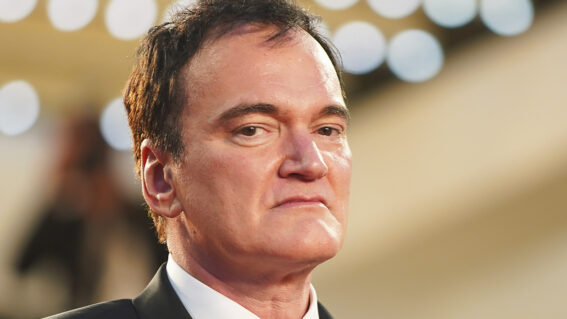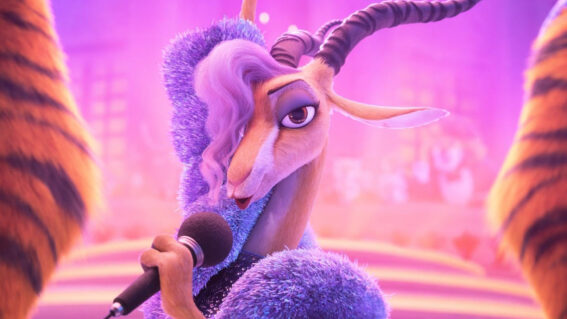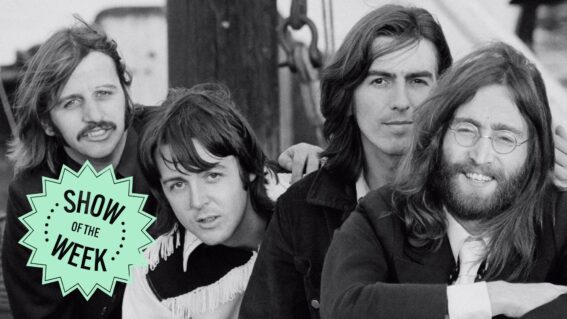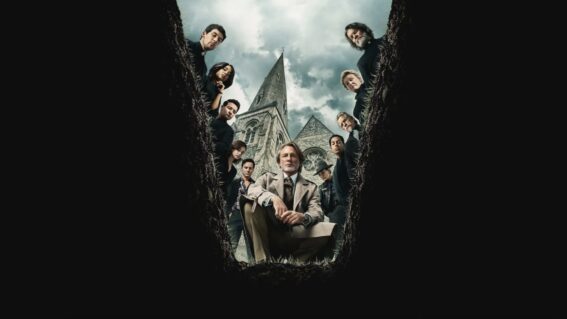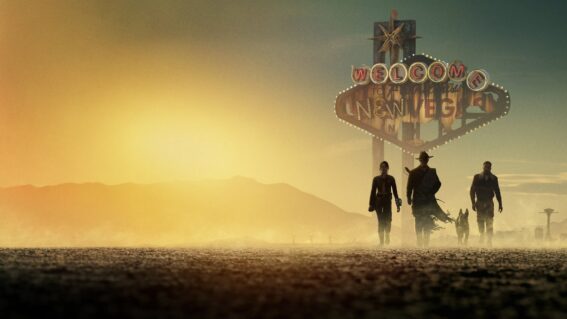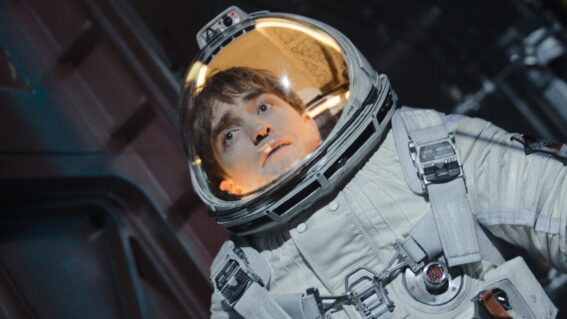Where does Terminator Zero fit into the often-dysfunctional canon?
The new Netflix series makes a strong case for continuing to tell stories in this realm.

With Terminator Zero, the animation studio behind anime classic Ghost in the Shell add to the apocalyptic sci-fi world created by James Cameron. Dominic Corry looks back at the often-dysfunctional Terminator canon and reviews the new Netflix iteration of the franchise.
Has a piece of beloved intellectual property ever been more spectacularly mismanaged than The Terminator?
Creator/writer/director (but critically, not rights holder) James Cameron set the standard for how genre stories can expand out gracefully and powerfully with Terminator 2: Judgement Day, but it’s mostly been a tale of woe since then.
Cameron declined to return for Terminator 3: Rise of the Machines in 2003, and although I remember feeling kind of let down by the Arnold Schwarzenegger-starring film upon its release (I was a huge T2 head), its tangible, analogue delights are increasingly charming with every passing year.
The next piece of major Terminator media was a 2008 live action TV series that few people took seriously at the time but, even more so than the third film, has come to be quite well-regarded in the years since. James Cameron apparently liked what he saw, as he hired its creator Josh Friedman to join his Avatar sequel brain trust.
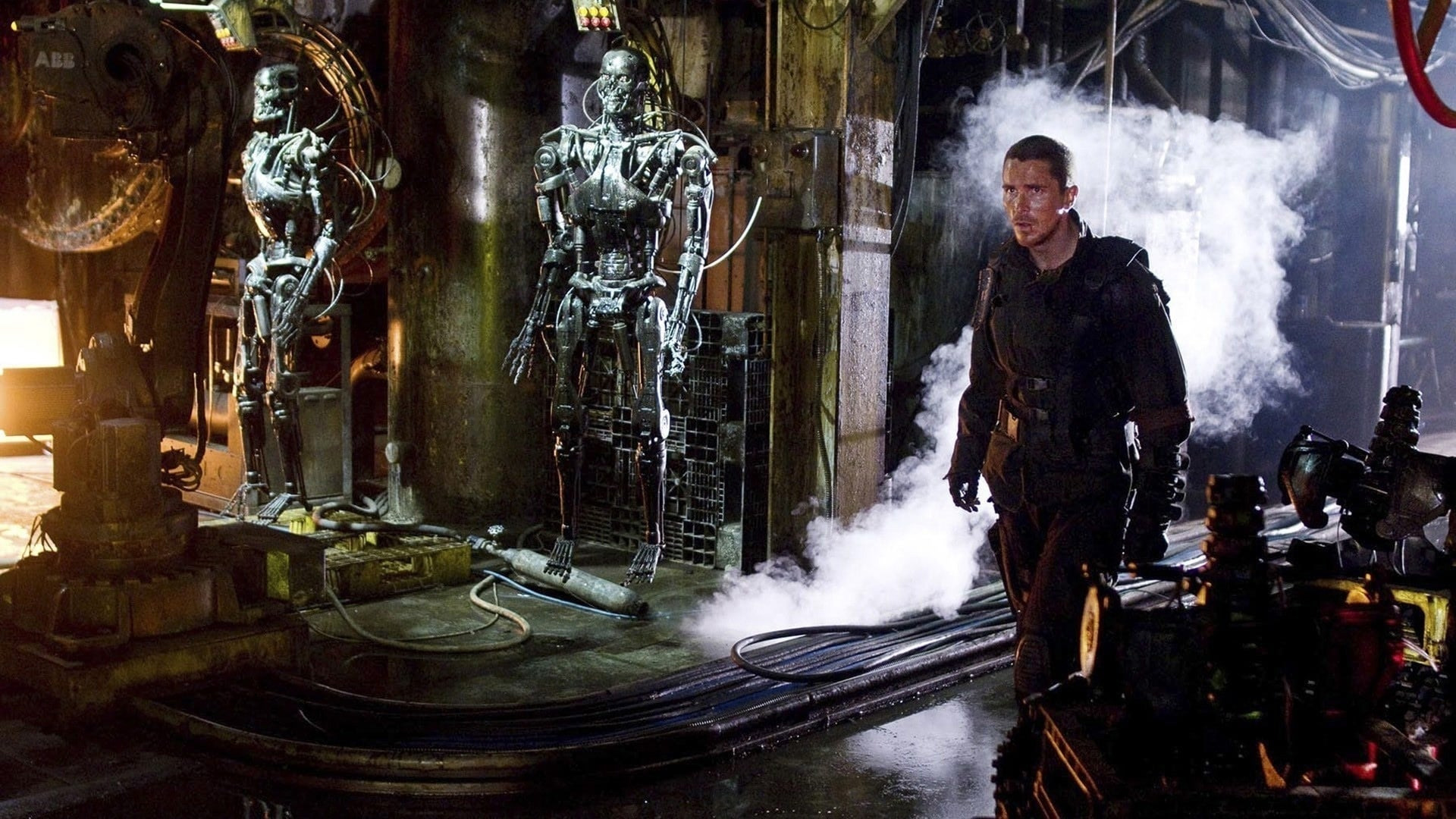
Terminator Salvation
2009’s Arnold-less (CGI Arnie don’t count) Terminator Salvation was the first attempt at a dramatic reboot of the series, and there is some interesting stuff in it, but the film chickened out of its most dramatic gambit at the last minute (partly due to story leaks), and undertook reshoots to (very awkwardly) eliminate the originally intending ending in which John Connor (Christian Bale) is replaced by a Terminator.
These days, the film is principally remembered for Bale’s on-set outburst, which also leaked.
Production company Skydance—who had great success reviving another property beloved by its CEO as a child in Top Gun: Maverick—subsequently acquired the rights to the franchise, and brought Arnie back for another dramatic reboot, 2015’s Terminator: Genisys which did lean into the John Connor (Jason Clarke here)-replaced-by-a-Terminator thread, but was fatally undercut by a confusingly convoluted timeline and two leads—Emilia Clarke as Sarah Connor and Jai Courtney as Kyle Reese—who were severely miscast.
It was poorly received, so Skydance started again, again, with 2019’s Terminator: Dark Fate, which brought back both Arnie and Linda Hamilton (for the first time since T2), while setting up its own mythology/timeline via Mackenzie Davis’ enhanced-human future soldier. Cameron also returned to produce, and famously tussled with director Tim Miller in the editing room, and The Sarah Connor Chronicles creator Josh Friedman contributed to the script.
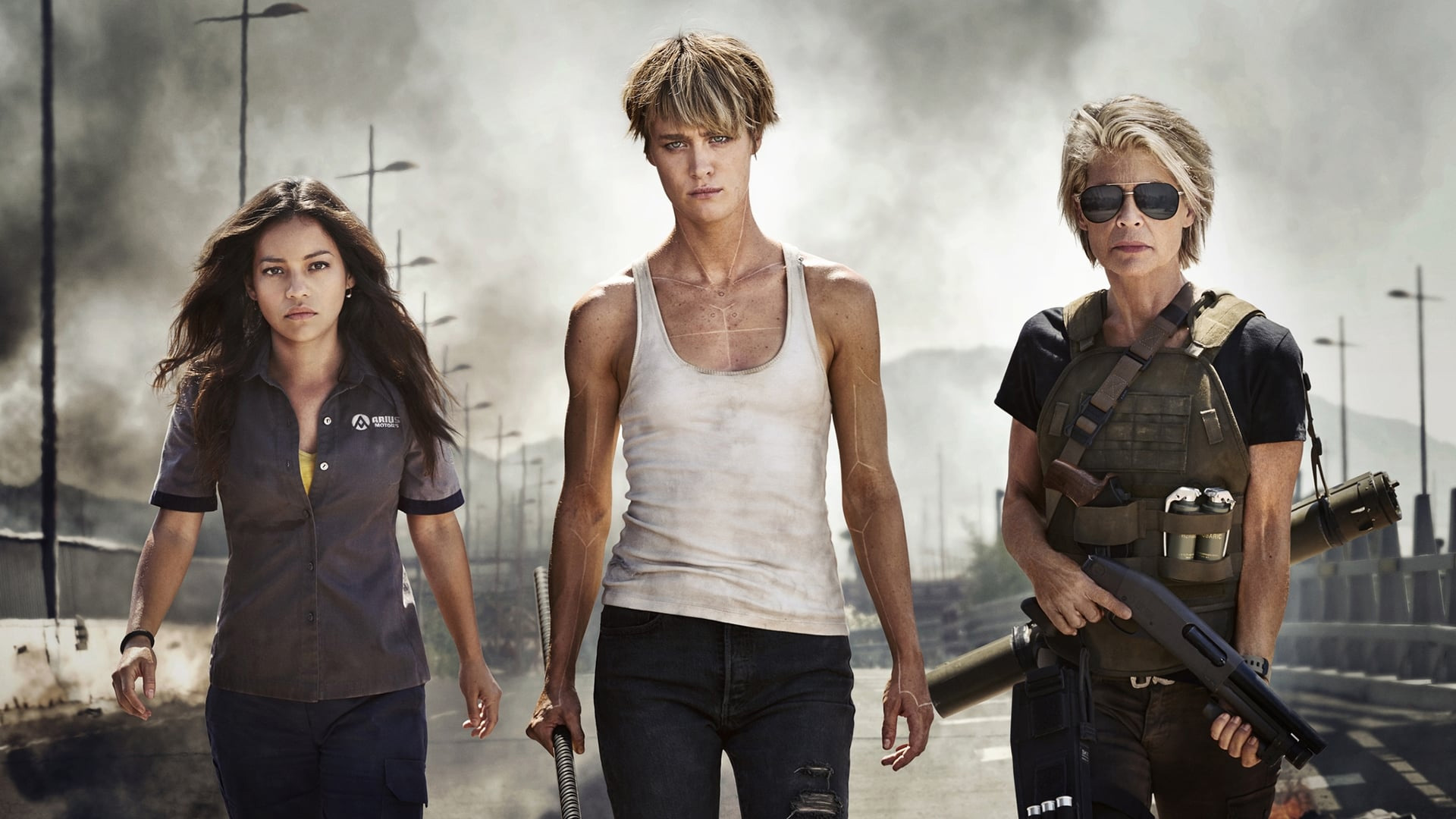
Terminator: Dark Fate
Although the film pulled something of an Alien 3 by killing off John Connor (as a child!), I thought Terminator: Dark Fate was pretty cool, and am disappointed it wasn’t successful enough for a follow-up. Miller cut a nice line in heavy-scale action, something this franchise specialises in, and his action was arguably the best since Cameron’s films.
So we are now three failed reboots in, which is rather unfortunate.
But hope recently reared its head when, without offering any details, Cameron stated he was working on something in the Terminator realm, which is rather exciting.
Also making a strong case for stories continuing to be told in this realm is Terminator Zero.
The Skydance people remain committed to this intellectual property, multiple failures or no, and they’ve arguably made their smartest decision since teaming up with Miller in collaborating with legendary Japanese animation studio Production I.G (who made Ghost in the Shell and did the animation sequences in Kill Bill Vol. 1) for this new Terminator series.
Created by Romanian filmmaker Mattson Tomlin, Terminator Zero principally takes place in Tokyo in 1997, in the lead up to Judgement Day.
Tomlin has said that the show treats all the prior films as canon (which creates all sorts of logistical issues when taken literally), but there are no crossover characters in the four episodes Netflix sent out for review (there are eight in total), unless you consider Skynet to be a character, I suppose.
It feels more like a familiar story told with new characters and altered dynamics, rather than anything that specifically leads into or is fed by other elements in the franchise.

The main character is a Japanese computer genius named Malcolm Lee (voiced by André Holland in the English dub), who has advance knowledge of what Skynet does on Judgement Day, i.e. the supercomputer comes online and immediately deems humanity a threat, launching all the nukes and causing the apocalypse. He has visions of all this in apocalyptic nightmares, and it doesn’t seem like a coincidence that this evokes the origin story of the Terminator franchise itself—the image of a metal skeleton emerging from flames with a knife famously came to Cameron in a fever dream.
Anyway, Lee has dedicated years to building a rival artificial intelligence named Kokoro (voiced by Rosario Dawson), designed to prevent Skynet from doing what he (mysteriously) knows it is fated to do, but he is starting to become concerned that Kokoro may have a similarly dim view of humanity.
Lee communicates with Kokoro in a big holodeck-style virtual reality chamber, which allows for much fantastic imagery as his very thoughts are visualised around him. Many of their conversations concern humanity’s essential nature, and whether or not we deserve to be saved.
Lee also has three young kids, the eldest of which is a dab hand with robotics, and the youngest of which is obsessed with a robopet toy…
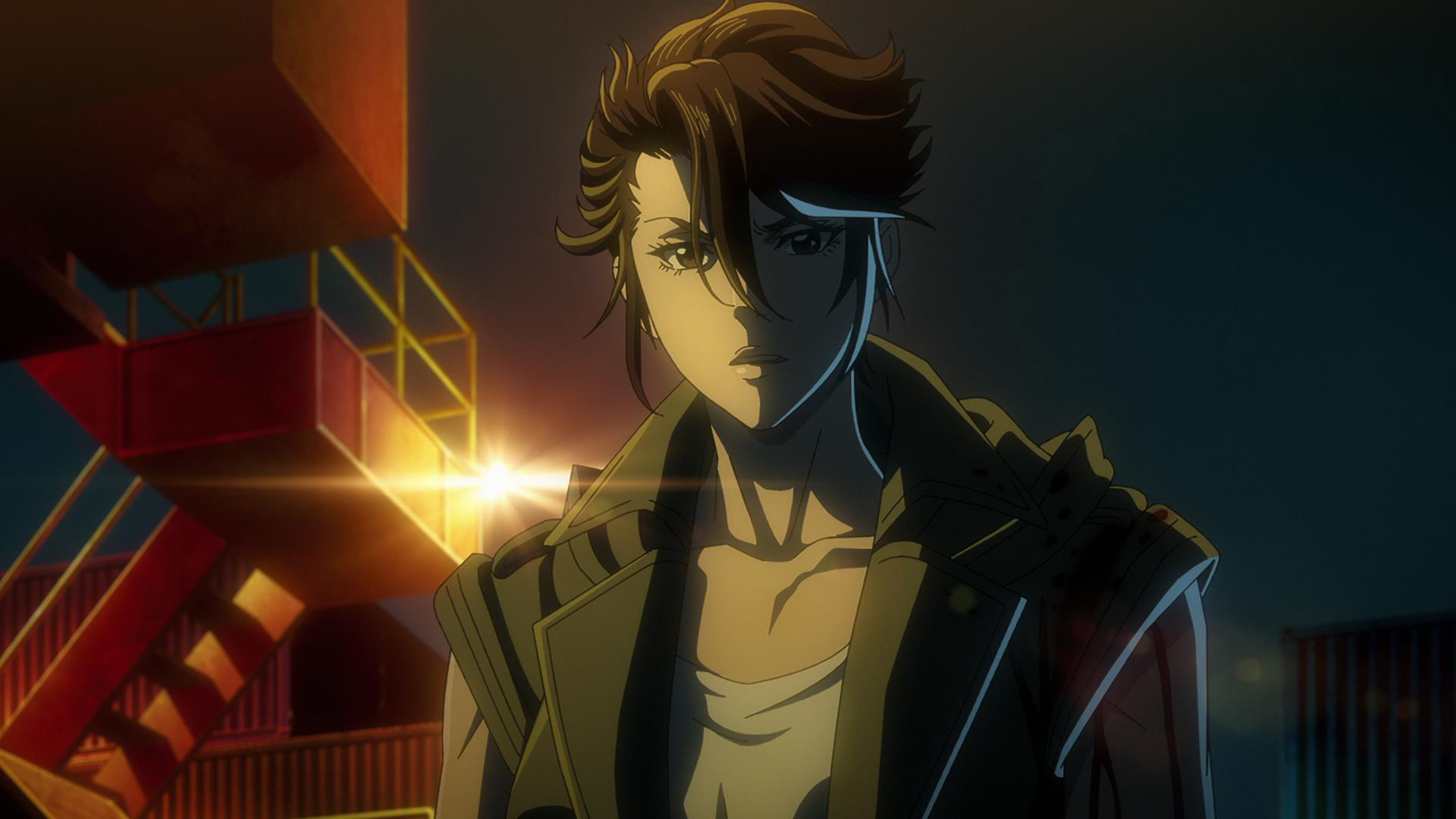
In 2022, a badass female freedom fighter named Eiko (voiced by Sonoya Mizuno from House of the Dragon) is sent back in time to 1997, as is a Terminator (voiced sparingly by Timothy Olyphant), and the show sustains some degree of mystery as to exactly what each one hopes to achieve.
But they’re both looking for Malcolm, who interprets his first encounter with the Terminator as evidence that his plan to prevent Judgement Day (now mere hours away) can work, and rushes off to talk to Kokoro about it, leaving his nanny to look for his three missing children.
Production I.G’s long association with cyberpunk aesthetics feels well-matched with this property and there is no dearth of visual splendour in this sleek enterprise. Although I still can’t help but wince at some of the more operatic facets of anime—the extreme overstatement, the endless grunts, gasps and gurning—this all feels really confident.
Lending weight to animated action is a big ask, but Production I.G distinguish themselves here, and some 3D elements are seamlessly integrated. The pure horror side of the Terminator itself, rarely accessed since the first film, is tapped into reasonably well also—such as when he’s attempting to lure the youngest child out of the shadows—and Olyphant steps up in these moments.
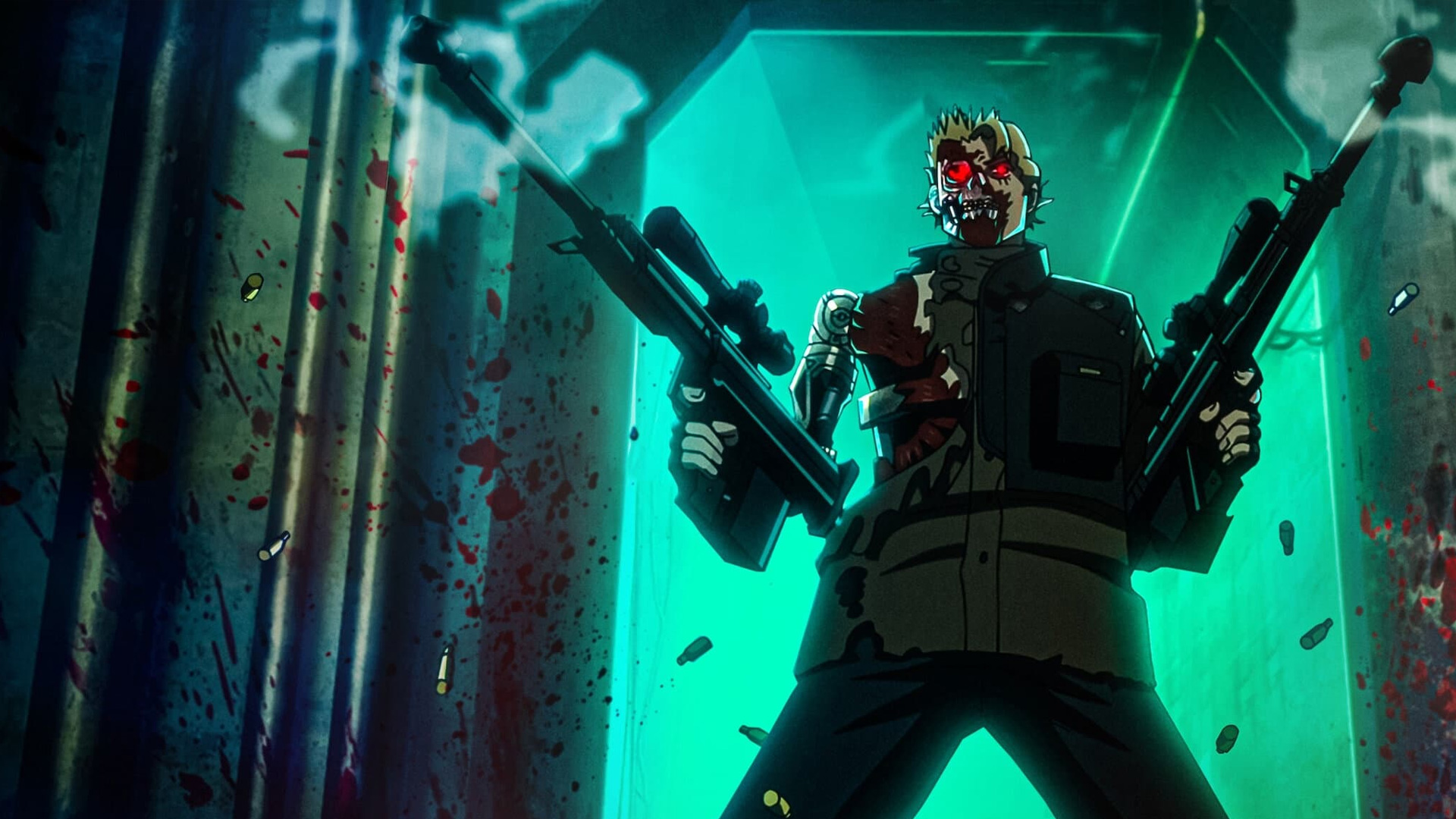
Some of the action set-pieces feel intentionally familiar, and there are many allusions to key moments/shots in the franchise. It was mostly T2 stuff, so I was happy. It has some new ideas of its own, too, among them being that this Terminator builds a crossbow into its arm, Travis Bickle-style, so he can launch nine-inch nails at his targets.
Although three young kids are central characters here, this is not a show for kids. There is violent gore and the characters us F-words—just as God James Cameron intended.
But perhaps the most remarkable thing brought to the franchise by this new addition is the fact that it is a story about potential nuclear devastation that takes place in a country where that has actually happened. Twice. And that gets acknowledged in the show. It can’t help but lend heft to the proceedings, which also choose to reference the Tokyo subway sarin attack.
These aspects aren’t front and centre, but they help make Terminator Zero a salient addition to the often-dysfunctional Terminator canon.







